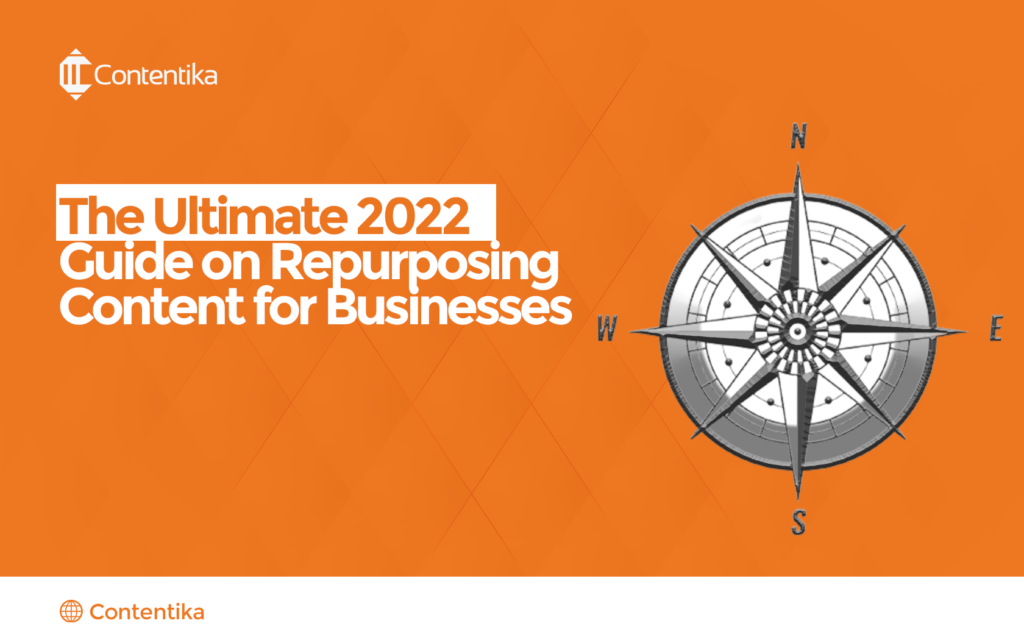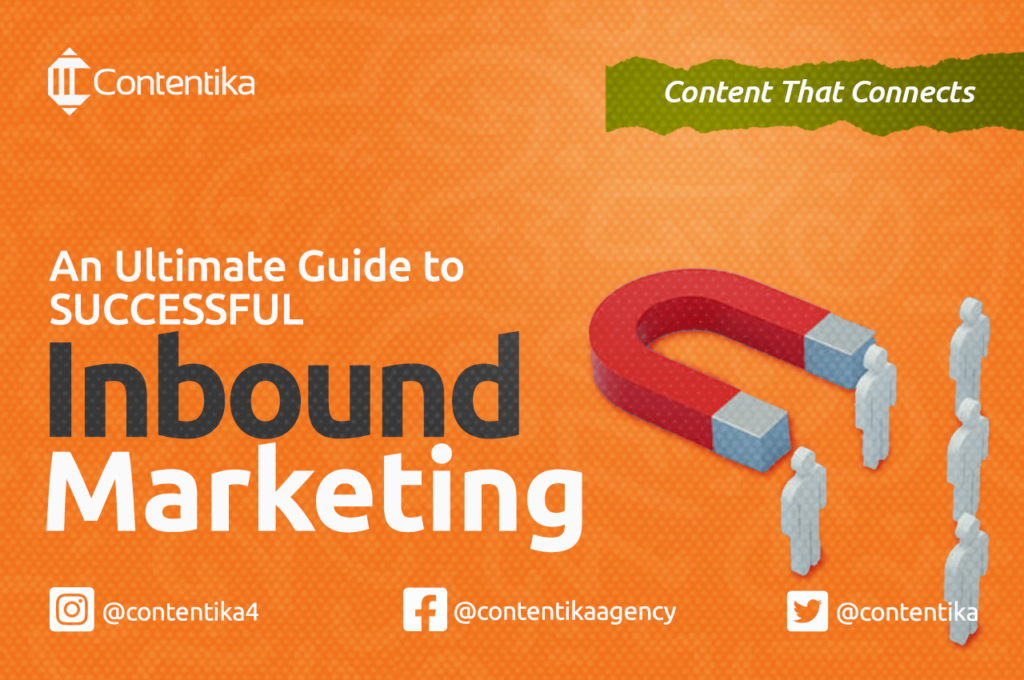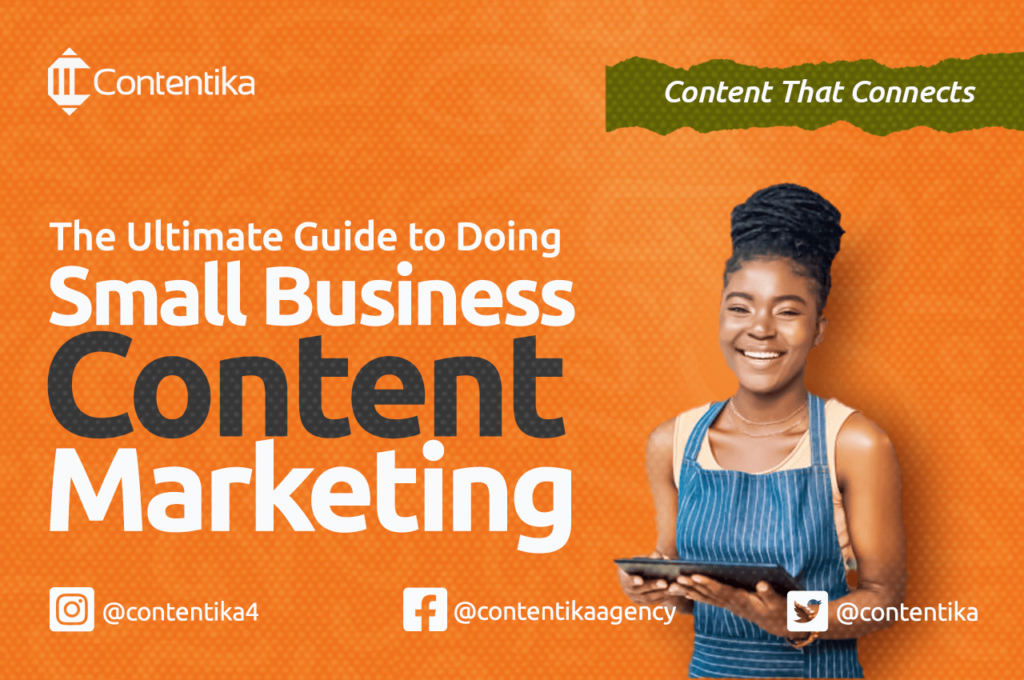The Ultimate Guide to a Successful SEO Content Marketing Strategy [+Free Template]
Looking to drive website traffic and conversions through SEO? This blog post provides a comprehensive content marketing and SEO strategy for doing just that.
How to Succeed with Affiliate Content Marketing: The Ultimate Guide

Recently, it would seem that everywhere on the internet, there is something about affiliate marketing and how somebody somewhere has made a few thousand dollars from affiliate marketing. This is not so surprising; the global value of the affiliate marketing industry is up to $17 billion. Affiliate marketing can be a great way to make some extra money on the side or even turn it into a full-time career. However, affiliate marketing is not as easy as it may seem at first glance. You need to do many things correctly to be successful with affiliate marketing, the chief of which is your content. In this guide, you will learn about affiliate marketing basics and how to create effective affiliate marketing content. How Affiliate Content Marketing Works Affiliate content marketing is a form of online marketing where you promote other people’s products or services in return for commissions. This can be done by creating your own content, such as blog posts, how-to articles, emails, videos, or social media updates, that include affiliate links to the products or services you’re promoting. When someone clicks on one of your affiliate links and makes a purchase, you earn a commission from the sale. Affiliate content marketing is a great way to make money online because it’s relatively easy to start, and you don’t need your products or services to promote. Affiliate marketing is also a very effective way to generate leads and sales for businesses. Affiliate content marketing works as a marketing and advertising model used to generate traffic and affiliate marketing sales from marketing efforts by an affiliate marketer. The business that offers the product and service compensates the marketer with a commission-based fee. Affiliate content marketing involves sharing the responsibility of marketing a product or service between a merchant and a publisher (affiliate). It is a three-way or four-way relationship that involves the product merchant, the affiliate, sometimes an affiliate network, and the consumer. The product merchant is the business that creates and sells the products or services. The affiliate is the middleman, and the consumer is the end user. The Product Merchant The Product merchant or seller can either be a large enterprise, an SME, or a solo entrepreneur owning the product or service to be marketed. It could either be a physical good or a service or SaaS (Software as a Service). The merchant sets up the affiliate marketing program but is not involved in the affiliate’s content marketing strategy. The merchant is at liberty to determine the terms and structure of their affiliate program and can reserve certain rights for themselves. The Affiliate Marketer The affiliate marketer agrees to promote the products or services of the merchant in exchange for a commission on each sale they generate. The affiliate is responsible for finding customers and driving traffic to the merchant’s website or landing page. The affiliate uses various marketing channels to promote the merchant’s products or services, such as email marketing, social media, paid advertising, and organic search. The affiliate is typically compensated based on a performance-based model, such as pay-per-click (PPC), pay-per-lead (CPL), or pay-per-sale (CPS). The Consumer The consumer is the end-user of the product or service. The consumer completes the chain of affiliate marketing. They are the ones who will ultimately be making a purchase from the merchant. The consumer is the one who interacts with your blog posts, social media posts, or emails. If they like what you’re promoting, they can use your affiliate link to buy it and earn a commission for the affiliate marketer. However, as a way of regulating the affiliate marketing industry and protecting consumers, the Federal Trade Commission makes it obligatory for affiliate marketers to include a disclaimer that would put the consumer on notice and allow them to make an informed choice. Types of Affiliate Marketing Affiliate marketing can be broken down into three main types: Unattached Affiliate Marketing In this type of affiliate marketing, the affiliate has no connection with the goods or services they promote. They also have no skills or expertise that would make them an authority to review or recommend a product or service. This absolves them of the duty to recommend. Unattached affiliates generally provide unbiased reviews of a group or type of products and then urge consumers to choose based on the perceived special features of each. Involved Affiliate Marketing In related affiliate marketing, the affiliate promotes products they have used before and are familiar with. The affiliate has personal experience with the product or service and can provide an honest review of it. Involved affiliate marketers generally provide more in-depth content than unattached affiliates because they want to build trust with their audience by providing valuable information. Their reputation is also directly tied to the product; hence, it is usually easier for consumers to trust their opinions. Related Affiliate Marketing Here, the affiliate marketer has some connection with the product or service in that they are familiar with the industry or operate in the same niche. For example, a project manager can be a related affiliate marketer for a project management software since they know the features and how they can make the work of a project manager easier. Affiliate Marketing Concepts Affiliate Network Marketing In affiliate network marketing, the affiliate marketer joins an affiliate network. The affiliate network is a platform that provides various affiliate programs from different merchants. The affiliate marketer selects the program(s) they want to promote and signs up for the corresponding affiliate link. The affiliate marketer earns a commission when someone clicks on the affiliate link and makes a purchase. Amazon Associates, ClickBank, and Refersion are some of the top affiliate networks available. Affiliate Marketing Management Affiliate marketing management involves keeping the entire affiliate marketing program running efficiently. Affiliate marketing managers are responsible for finding and signing affiliate partners, tracking affiliate activity, and issuing payments. Affiliate marketing managers perform the following functions: Affiliate marketing managers also support affiliates and help them grow their businesses. Affiliate marketing
The Ultimate Guide on Repurposing Content for Businesses

Are you looking for ways to get more mileage out of your content? If you’re like most business owners, you’re probably always on the lookout for ways to get more bang for your buck – repurposing content is a great way to do that. Reusing and repurposing old content can save time and money while still delivering fresh, relevant, and engaging content to your audience. This guide will show you how to repurpose content for maximum impact. We’ll cover everything from how to choose the right pieces of content to the different ways you can go about doing it. What is Repurposing Content? Repurposing content simply means taking an old piece of content and using it in a new way. This could mean turning a blog post into an infographic or a video, or converting an ebook into a series of blog posts. By repackaging your content in different formats, you can reach a new audience, generate more leads, and achieve other marketing goals. There are endless possibilities when it comes to repurposing content. The key is finding creative ways to reuse your existing material to resonate with your audience in a new and different way. For instance, blog content can be easily repurposed into a video or a guest post for another blog or made into your blog. In the same way, you can create social media posts Youtube videos, or other video content. Sometimes, all it takes is to look at your content from a different perspective to come up with new ideas for how to repurpose it. Other times, you may need to do some research to find a suitable format for your audience. The important thing is that you take the time to consider all of your options before settling on a particular approach. Whichever, make sure the final product still contains your original message. It not only gives you a better chance of success but also helps you avoid any potential pitfalls. Why Repurpose Content? There are many reasons why business owners choose to repurpose their content. In most cases, it boils down to the following objectives: Get More Mileage Out of Your Content: Repurposing content allows you to get more mileage out of your existing content. Instead of creating all new content, you can reuse old material in a new way that still adds value for your audience. For example, let’s say you have a blog post that performed well, with many shares and comments. Repurposing this content into an infographic or video can help you reach even more people and drive further engagement. That way, you don’t have to create new content; instead, you can focus on repackaging and promoting your best-performing pieces. It is like hitting two birds with one stone. Saving Time and Money You would agree that creating high-quality content takes a lot of time and effort, especially when you’re doing so from scratch. If you’re only going to use that content once, you’re not getting the most out of it. Why? Because once you’ve published a piece of content, it doesn’t just disappear into thin air. It remains on your website (or wherever else you published it) and can continue to generate leads and traffic long after you hit the publish button. By repurposing old content, you can get more mileage out of it without having to start from scratch every time you want to publish something new. This saves you time and money – because you’re able to get more use out of the content you’ve already created. Reaching a New Audience When you create new content, it’s crucial to think about how you can reach a new audience with it. For example, if you have an entire blog post that’s doing well with your target audience, you can turn it into an infographic and share it on social media. This allows you to reach people who may not be familiar with your brand but who are interested in the topic you’re discussing. Generating More Leads One of the main goals of content marketing is to generate leads – repurposing content can help you do that. A good example is that you can turn an engaging ebook into a series of actionable blog posts and use it as a lead generation tool. By including a call-to-action (CTA) at the end of each post, you can encourage people to download your ebook and become leads. Building Relationships with Customers and Prospects Another goal of content marketing is to build relationships with customers and prospects. And one of the best ways to do that is by creating helpful and informative content. If you have just one blog post that’s doing well with your target audience, you can turn it into an email course and use it to nurture prospects and build customer relationships. By sending people valuable information regularly, you can keep them engaged with your brand and build a rapport with them. Increase Your Visibility Repurposing content can also help you increase your visibility and get more eyes on your brand. When you create new content, be sure to promote it across your social media channels, email list, and other marketing channels. You can also submit it to directories and aggregators such as Alltop and the like. The more places your content is, the more likely people are to find it and learn about your business. Boosting SEO Rankings Finally, repurposing content can also help you boost your Search Engine Optimization (SEO) rankings. When you publish new content, it gives you the opportunity to include relevant keywords and phrases that people are searching for. Optimizing your content for search engines can improve your chances of ranking higher in the search results. Not only that, but republishing old content also allows you to attract new readers and keep your existing readers coming back for more. Types of Content That You Can Repurpose Almost any type of content can be repurposed, including: How Best to Repurpose Content Now that you
An Ultimate Guide to Successful Inbound Marketing

Digital marketing can be overwhelming, with a constant stream of new tactics and technologies to keep up with. But at the end of the day, all inbound marketing comes down to making good content and connecting with your audience in a tangible way. Customers don’t want to be bombarded with sales messages – they want valuable content that speaks to their needs and interests. And that’s where inbound marketing comes in. Building real relationships seems to be a lost art these days, but it’s an integral part of successful inbound marketing. Yet, building connections can be done by throwing a bunch of stuff at the wall and seeing what sticks- it’s about creating a strategy that works for your business and then following through with consistent execution. So, how can you make sure your inbound marketing efforts are successful? In this ultimate guide, we’ll cover everything from creating a buyer persona to measuring your ROI. Let’s dive in. What is Inbound Marketing? Inbound marketing is a type of marketing that focuses on creating and distributing valuable content to attract, convert, close, and delight customers. It simply shows you the process of bringing customers to you instead of you going out and finding them. It serves the goal of attracting strangers and turning them into happy customers. What’s more? Inbound marketing is holistic and consumer-centric. This means that it goes beyond just getting your business name out there. NO! It’s more about building relationships and creating a positive brand image that will last long after the sale. When you offer such an exceptional customer experience, it’s pretty easy for them to do business with you again and recommend you to others. What Are The Benefits of Inbound Marketing? Several benefits come with using inbound marketing to attract and convert customers. Some of these benefits include: Inbound Marketing & Outbound Marketing Inbound marketing and outbound marketing are two sides of the same coin. Outbound marketing is the traditional form of marketing that involves interruption tactics like cold-calling, TV commercials, and pop-up ads. Inbound marketing, on the other hand, Inbound marketing focuses on building customer relationships by giving them helpful content. The main difference between the two is that inbound marketing takes time and outbound marketing gives you results right away. However, in the long run, inbound marketing is more effective because it builds trust and credibility with the customer, which leads to more conversions. Outbound marketing is usually less effective than inbound marketing because it is more disruptive and can be expensive. Inbound marketing is generally more effective because it’s more targeted and efficient. Inbound Marketing & Content Marketing Inbound marketing and content marketing are often used interchangeably, but they are two different things. Inbound marketing is a more holistic approach that covers all aspects of the customer journey, while content marketing is just one piece of the puzzle. This means that inbound marketing and content marketing are that inbound marketing covers the entire customer journey from awareness to purchase. In contrast, content marketing focuses on the relationship between a business and its customers. Be that as it may, inbound marketing is a type of marketing that focuses on attracting customers to your business. On the other hand, you can use content marketing to support your overall marketing goals. It involves creating and sharing valuable content to attract and retain customers – blog posts, ebooks, infographics, etc. Although content marketing is often used as part of an inbound marketing strategy, you can use it independently. Why is Inbound Marketing Important? Inbound marketing has become increasingly important as the world of marketing has changed. Outbound marketing tactics like cold-calling, TV commercials, and interruptive ads were the norm in the past. Today, that has completely changed! Potential customers are much more likely to do their research online before ever contacting a company. Why? Because they can. The internet has enabled customers to find the information they need without talking to a salesperson. Interestingly, they often don’t even have to leave their living room to do it. That’s why inbound marketing is so important. It’s a way to reach your target audience where they are – online. So, inbound marketing is crucial because it helps you: Whatever your product or service, inbound marketing can help you attract strangers and turn them into customers. If you’re not using inbound marketing, you’re missing out on a huge opportunity to grow your business. How Can You Use Inbound Marketing? There are several ways you can use inbound marketing to attract and convert customers. Some common methods include: Blog Posts Blogs are a great way to reach your target audience and show that you are an expert in your field. You can do this by regularly creating, publishing, and distributing relevant content in different forms, such as articles, infographics, videos, and others. SEO “SEO” stands for “search engine optimization.” It is an excellent way to get search engines to notice your website and the content you post. When you optimize the content on your website, you can reach your target market once they search for information related to your business. In other words, SEO makes your content appear higher on search engine results pages (SERPs). By doing this, your website may increase in search results, leading to more traffic. To effectively achieve this, you have to choose the right keywords, create an engaging title/headline and make the format of your content easy to read. Social Media Social media platforms like Twitter, Facebook, and LinkedIn are excellent ways to share your blog posts and other pieces of content with a broader audience. Recent statistics show that While 91 percent of companies use some kind of social media for marketing, 96 percent of people who discuss brands online follow and interact with those brands. Social media provide that platform for building relationships with potential and current customers and promoting your business. You can also build relationships with current and potential customers by answering their questions and concerns through social media.
The Ultimate Guide to Doing Small Business Content Marketing [+Free Template]

Small business owners have their work cut out for them. Not only do they have to manage the day-to-day operations of their businesses, but they also have to find time to market them effectively. However, marketing can be both challenging and expensive. It’s hard to compete with the big guys regarding visibility; traditional advertising methods can be prohibitively expensive. But there is another way: content marketing. Content marketing is a cost-effective way to reach your target market without breaking the bank. Creating and distributing high-quality content can build your business’s credibility, trust, and visibility. Still, creating and publishing quality content consistently can be a challenge. This guide will show you how to start content marketing for your small business. We’ll cover everything from defining your target market to creating and promoting your content. By the end of this guide, you’ll have everything you need to start driving results with content marketing. What is Content Marketing? Content marketing is creating and sharing content to attract and engage an audience. This business content strategy can come in many forms, including blog posts, videos, infographics, ebooks, etc. Content marketing is integral to any digital marketing strategy as it helps you attract leads and build trust with your audience. By providing valuable and relevant information, you can establish yourself as an expert in your industry, helping you build a loyal customer base. Content marketing is also one of the most effective ways to improve your SEO and keyword research tools. Creating keyword-optimized content can rank higher in organic search engines, helping you attract more organic traffic to your website. Why is Content Marketing Essential for Your Small Business? Content marketing is one of small business owners’ most effective marketing strategies. Why? Because it allows you to share your story, connect with your customers, and build lasting relationships. Sure, there are other marketing strategies out there that can help you reach new customers and grow your business. But a great content marketing strategy does something that different methods can’t: It enables you to build trust and credibility with your audience. And that’s essential for any small business that wants to succeed in the long run. Think about it this way: When someone comes across your website or reads one of your blog posts, they get to know you and your business. They’re learning what you stand for and what you’re all about. And if they like what they see, they’re more likely to do business with you in the future. Content marketing for small businesses is also a great way to connect with your customers deeper. Sharing your story and values can create an emotional connection beyond the transaction. When you connect with your customers, they’re likelier to stick with you through thick and thin. So, suppose you’re not using a great content marketing strategy to promote your small business. In that case, you’re missing out on a crucial opportunity to build trust, credibility, and relationships with your audience. Don’t make that mistake! Implement a great content marketing strategy today, and start reaping the benefits for your business. Benefits of Content Marketing for Small Business Content marketing strategy is highly beneficial to small business owners. Not only does it help you reach a larger audience, but it also allows you to build trust and credibility with your target market. Content marketing is an extremely powerful tool for growing your business when done correctly. Some of the benefits of the content marketing program for small businesses include the following: Reach a Larger Audience Content marketing allows you to reach a larger audience than traditional advertising techniques. By creating and distributing high-quality content, you’ll be able to attract new visitors to your website and expand your reach. Build Trust and Credibility You’ll build trust and credibility with your target trade by providing helpful and informative content. This is extremely important for small businesses looking to establish themselves in the industry. This can also be done by publishing high-quality, informative content that helps them solve their problems. As you establish yourself as an expert in your field, people will be likelier to buy from you and recommend you to others. Increase Sales and Revenue If you can generate more traffic to your website, you’ll also be able to increase sales and revenue. Content marketing can be a great way to boost your bottom line. Also, consistently providing valuable content to your audience will build their loyalty and trust. This can lead to repeat customers and long-term success for your business. Save Money Content marketing is a cost-effective way to reach your target market. When done correctly, it can save money on traditional advertising techniques, like print or television commercials. About 42% of B2B marketers reported that their content marketing efforts had reduced the need for paid advertising. It’ll also allow you to track your results and see a return on investment, making it easier for you to allocate your budget and make smart business decisions. Stand Out from the Competition In today’s competitive marketplace, small businesses need to stand out from the crowd. Content marketing can differentiate your business from competitors and make a name for yourself in the industry. Content marketing can be an extremely effective way to grow your small business. If you want to reach a larger audience, build trust and credibility, or stand out, consider using content marketing as part of your overall marketing strategy. How to Create a Small Business Marketing Strategy When marketing your small business, there are different excellent content marketing strategies that you can employ. The key is finding the right mix of techniques for your company and testing and tweaking your approach constantly. Start a Blog Starting a blog is one of the most cost-effective methods to market your small business. Relevant blog articles allow you to share your expert knowledge with a broader audience and attract new customers and clients. Plus, well-written blog content can help to build your brand and reputation. It also gives your audience


